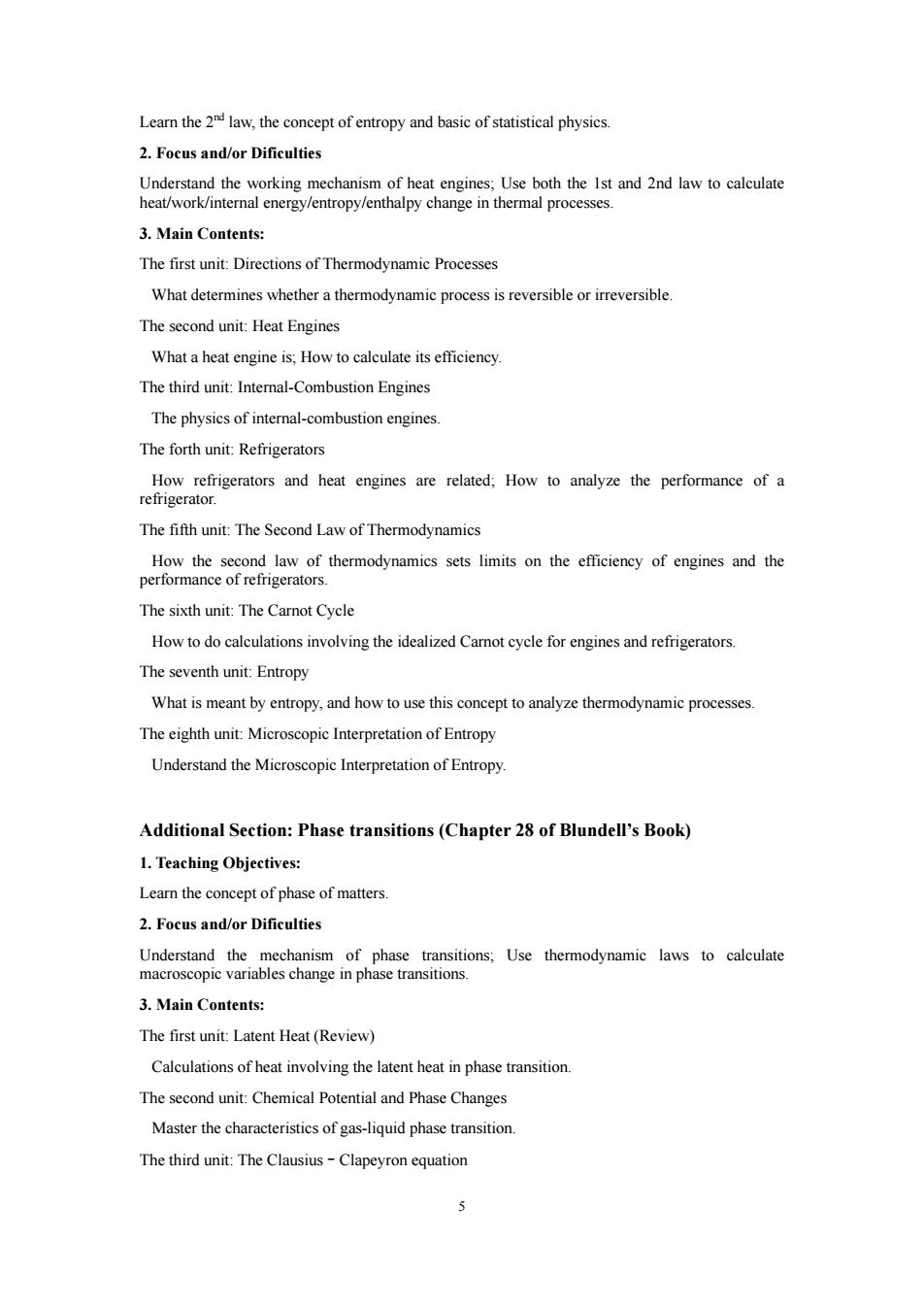正在加载图片...

Learn the 2 law,the concept of entropy and basic of statistical physics 2.Focus and/or Dificulties s Use both the Ist and 2nd law to calculate 3.Main Contents: The first unit:Directions of Thermodynamic Processes What determines whether a thermodynamic process is The second unit:Heat Engines What a heat engine is.How to calculate its efficiency. The third unit:Internal-Combustion Engines The physics of interal-combustion The forth unit:Refrigerators How refrigerators and heat engines are related:How to analyze the performance of a refrigerator. The fifth unit:The Second Law of Thermodynamics of thermodynamics sets limits on the efficiency of engines and the ator The sixth unit:The Carnot Cycle How to do calculations involving the idealized Camot cycle for engines and refrigerators. The seventh unit:Entropy What is meant by entropy,and how to use this concept to analyze thermodynamic processes The eighth unit:Microscopic Interpretation of Entropy Understand the Microscopic Interpretation of Entropy. Additional Section:Phase transitions(Chapter 28 of Blundell's Book) 1.Teaching Objectives: Learn the concept of phase of matters 2.Focus and/or Dificulties Understand the mechanism of phase transitions:Use thermodynamic laws to calculate macroscopic variables change in phase transitions. 3.Main Contents The first unit:Latent Heat (Review) Calculations of heat involving the latent heat in phase transition The second unit:Chemical Potential and Phase Changes Master the characteristics of gas-liquid phase transition The third unit:The Clausius-Clapeyronquation 55 Learn the 2nd law, the concept of entropy and basic of statistical physics. 2. Focus and/or Dificulties Understand the working mechanism of heat engines; Use both the 1st and 2nd law to calculate heat/work/internal energy/entropy/enthalpy change in thermal processes. 3. Main Contents: The first unit: Directions of Thermodynamic Processes What determines whether a thermodynamic process is reversible or irreversible. The second unit: Heat Engines What a heat engine is; How to calculate its efficiency. The third unit: Internal-Combustion Engines The physics of internal-combustion engines. The forth unit: Refrigerators How refrigerators and heat engines are related; How to analyze the performance of a refrigerator. The fifth unit: The Second Law of Thermodynamics How the second law of thermodynamics sets limits on the efficiency of engines and the performance of refrigerators. The sixth unit: The Carnot Cycle How to do calculations involving the idealized Carnot cycle for engines and refrigerators. The seventh unit: Entropy What is meant by entropy, and how to use this concept to analyze thermodynamic processes. The eighth unit: Microscopic Interpretation of Entropy Understand the Microscopic Interpretation of Entropy. Additional Section: Phase transitions (Chapter 28 of Blundell’s Book) 1. Teaching Objectives: Learn the concept of phase of matters. 2. Focus and/or Dificulties Understand the mechanism of phase transitions; Use thermodynamic laws to calculate macroscopic variables change in phase transitions. 3. Main Contents: The first unit: Latent Heat (Review) Calculations of heat involving the latent heat in phase transition. The second unit: Chemical Potential and Phase Changes Master the characteristics of gas-liquid phase transition. The third unit: The Clausius–Clapeyron equation